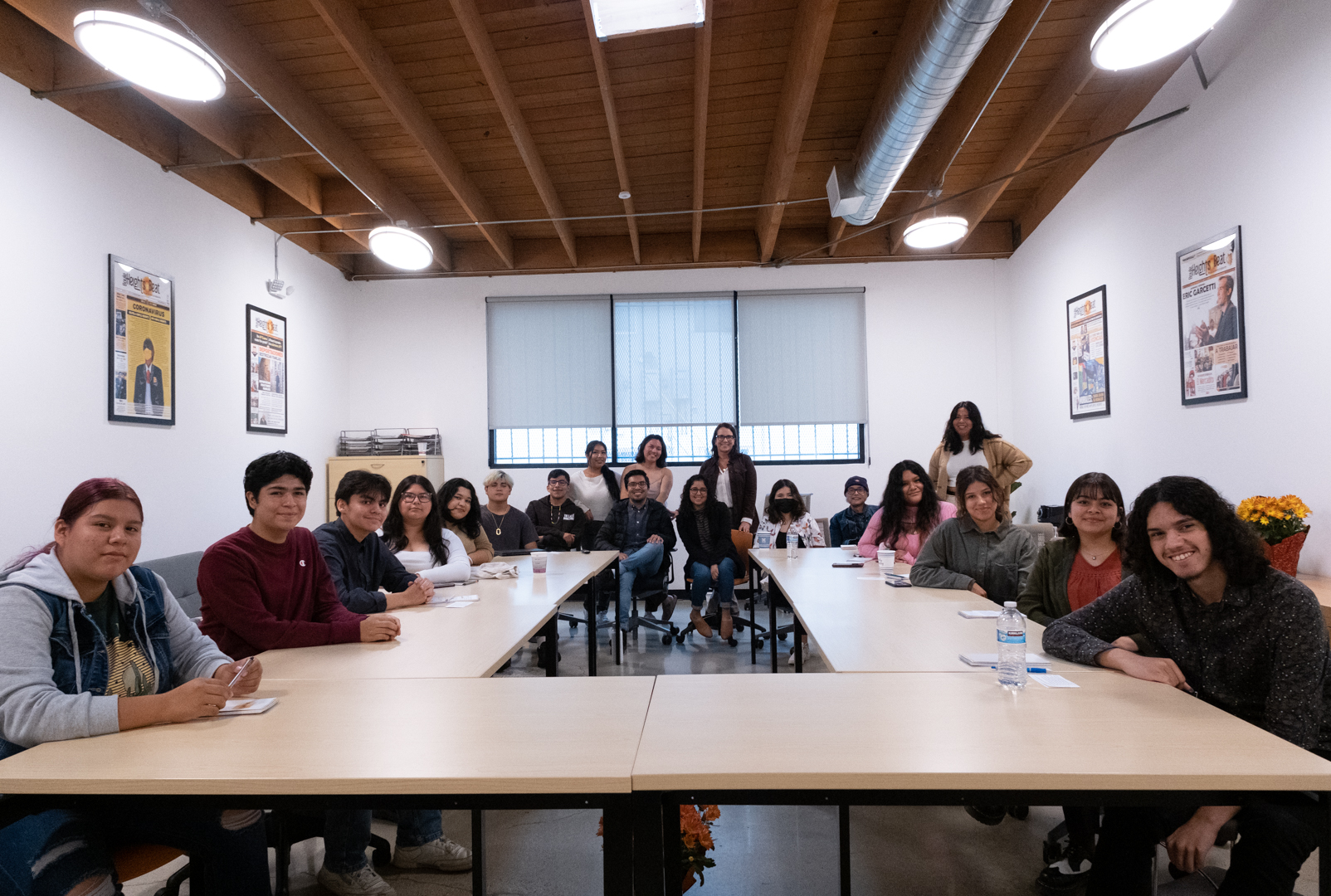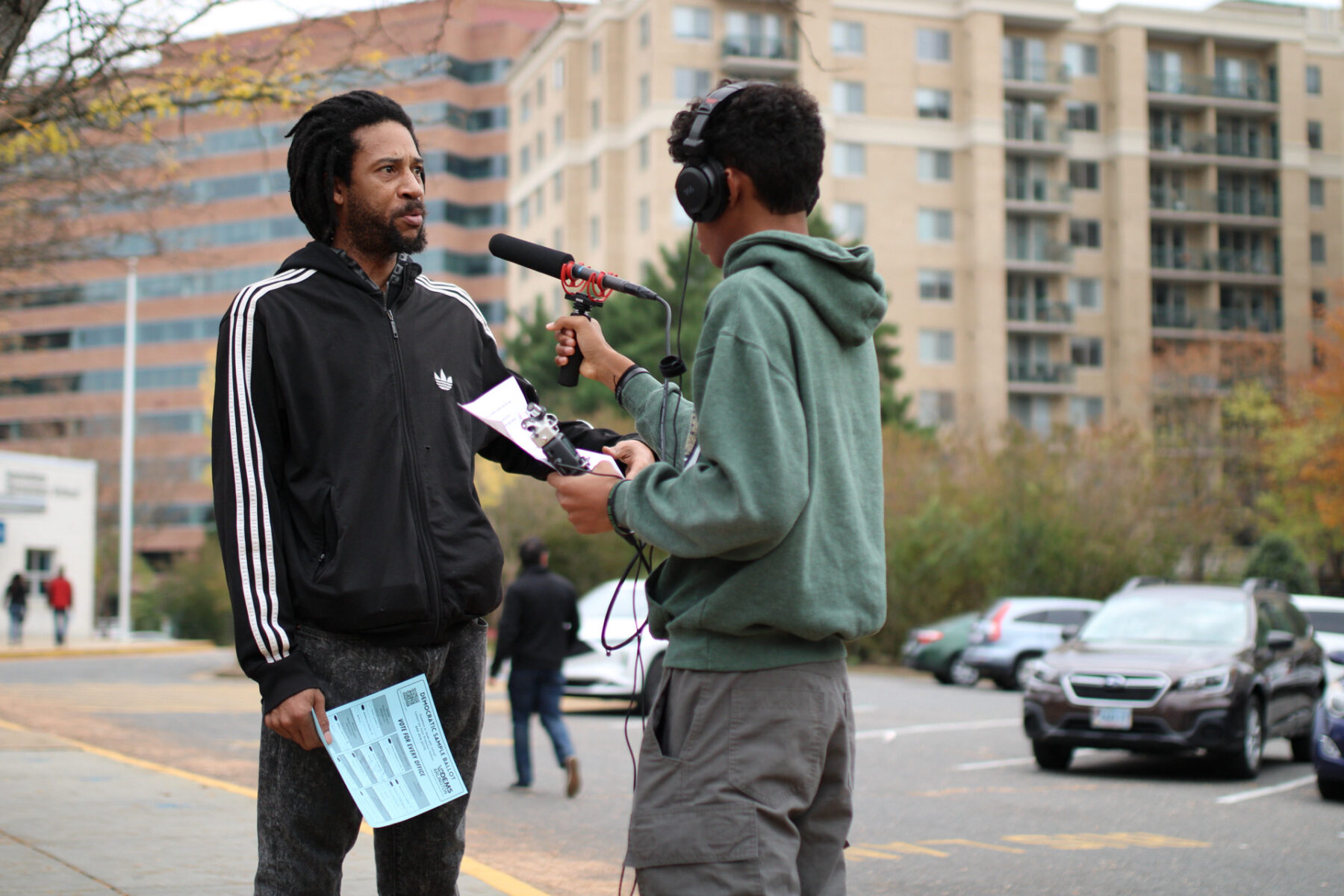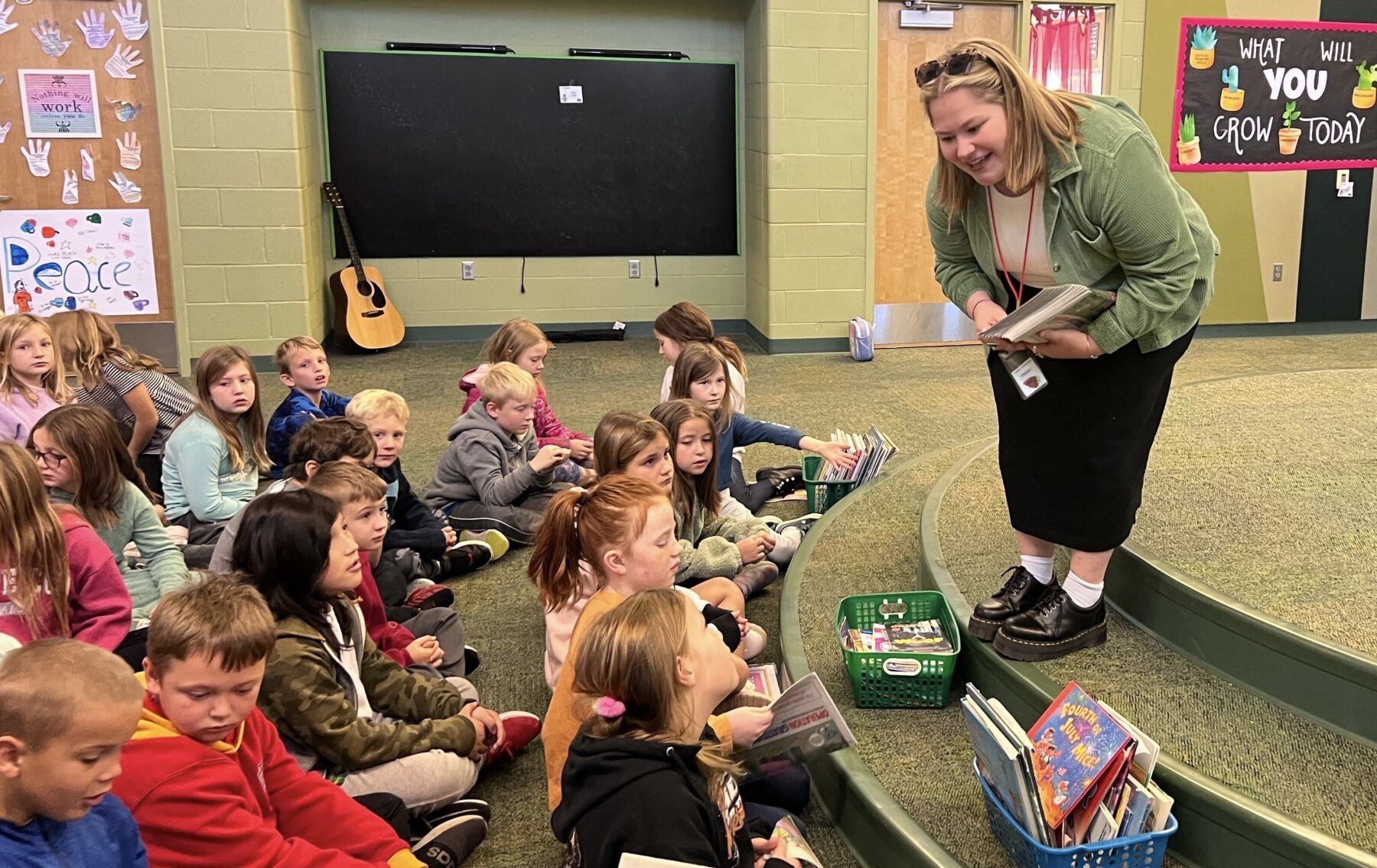
In 2018, Carmen Gonzalez joined the Boyle Heights Beat, after the bilingual journalism youth program visited her Eastside Los Angeles high school. Over the next few years, she hosted the Beat’s podcast, “Radio Pulso,” and helped break the news of the 2019 Los Angeles teachers’ strike, talking to teachers and students before most mainstream outlets had a chance to. She was even interviewed on NPR’s “All Things Considered” about her reporting.
Gonzalez is now majoring in journalism at Cal State-Long Beach, but she still works as the Boyle Heights Beat community engagement coordinator, recruiting reporters and readers at farmers’ markets and other events.
“I hear feedback and get to be the listening ear to the elders in the community,” she said. “I’ve learned that people have agency, they want to tell their stories, and I can put it in an accessible way for them.”
Student newsrooms, like the Beat’s, are filling in where local news coverage lacks. More than half of counties in the United States don’t have full access to consistent local news, according to a 2023 report from Northwestern University’s Medill School of Journalism, and around 6% are “news deserts,” areas without a single local news source.
“Student journalists have a different view of what’s important,” said Franklin College junior Ashlyn Myers, who covers the Indiana legislature for the campus-based The Statehouse File. “I feel like some senior journalists want those big, Watergate-like stories, and they don’t see the smaller things that end up impacting people every day.”
I spoke with young reporters and advisers at several student journalism programs. Here’s how they’re filling their communities’ local news gaps.
Viewing the community from a youthful perspective
At the Beat, young reporters have tackled hyperlocal stories they care about in the majority Latino community, such as a TikTok trend causing vandalism at a high school and gentrification in the tight-knit neighborhood. They have also examined the neighborhood impact of citywide stories, like the 2022 Los Angeles mayoral election, and have covered accidents that have led to the city installing a safer crosswalk.
“You can teach students to look at their community differently, and ask themselves questions like, ‘Why is this here? Why is this happening at my school? Does this happen at all schools?’” said Beat executive director and publisher Christine Kelley, a longtime TV journalist and producer. “And then they start asking, ‘What happens next, why is it different, and what can we do about it?’ We help them get those questions rolling.”

At The Arlington Amp podcast, part of the Arlington Independent Media’s Youth Journalism Initiative, high school students shed light on local issues affecting teens in their Virginia community that often get overshadowed by national politics in neighboring Washington. Last summer, the teen journalists’ podcast explored the local Arlington government, a plan to revamp a dangerous boulevard and an art exhibit about grief.
“A lot of the concerns are directly related to what high schoolers are thinking about, like trans issues and mental health,” said faculty member Kristen Clark, who runs the Amp. “This is an opportunity for young people to do kind of deeper storytelling, and in Arlington County, some of the most pressing issues are directly related to or [are] about teenagers. They should have a voice in the conversation.”
Keeping tabs on public meetings and government
As local newspapers and media outlets disappear, so does coverage of community pillars, like neighborhood councils and school board meetings. Reporting on these essential gatherings has sometimes fallen on local student news programs, like the University of Kansas’ Eudora Times.

Founded in 2019 by journalism professor Teri Finneman, the online publication covers Eudora, a news desert 10 miles from the university’s Lawrence campus. Sara Maloney joined the Times through a journalism class during her junior year. Now a college graduate, she is the outlet’s first full-time reporter and managing editor as a Poynter-Koch Media and Journalism fellow.
In the role, Maloney is responsible for attending local public meetings around Eudora, breaking news from city hall executive sessions that decide on a new city manager, and late-night school board meetings that announce a new principal.
“I think the most helpful thing is going there and seeing what people do,” she said. “It’s key to get yourself immersed and put yourself in that space to see what the community is like, from an outsider’s perspective if you’re new.”
Franklin College’s The Statehouse File has an office in the Indiana Statehouse press corps and gives students like Myers the opportunity to cover the inner workings of the legislature, attending legislative sessions and seeing how bills become laws. Myers started reporting for the online outlet as a 17-year-old freshman two years ago and has covered bills like Indiana’s version of Florida’s “Don’t Say Gay” law and a plan to require cursive handwriting in schools.
“I’ve learned the weird political structure of state government and how much debate goes into a bill,” she said. “How one person standing up and bringing up a concern can change the course of a whole law.”
Engaging with the community on issues that matter to them
By working at these local student publications, young journalists are also learning the ins and outs of reporting on a community that they engage with regularly. In Maloney’s full-time job at The Eudora Times, she talks with city officials often, delicately navigating source-reporter relationships.
“It can be scary to think you might be upsetting a city official or school board official,” she said. “You still have to do your job, but also, you don’t want to lose this person as a source.”
Much of Maloney’s role is identifying and covering the stories that matter most to the residents of the small Kansas city, like their worries about Panasonic constructing a battery factory about five miles away. Eudora also has a large older population, so the Times has a dedicated section for them, featuring Maloney’s stories about a senior foundation’s hobby showcase and the high school’s 65-year reunion.
At The Statehouse File, Myers not only reports on the legislative sessions, but also how local residents feel about the new bills and laws.
“I’ve had to learn how to find the emotional side of very black-and-white political issues,” she said. “A lot of times, journalists are worried about getting the facts and news, which obviously is important, but sometimes we neglect to figure out who is actually being affected by the issues that are being faced in the State House. It’s a skill that I’ve had to wrestle and a muscle I’ve had to flex in a new way.”
Hear more about how students are filling news gaps at the News Literacy Project’s virtual panel on Wednesday, Jan. 24 at 5 p.m. EST, as part of National News Literacy Week.



